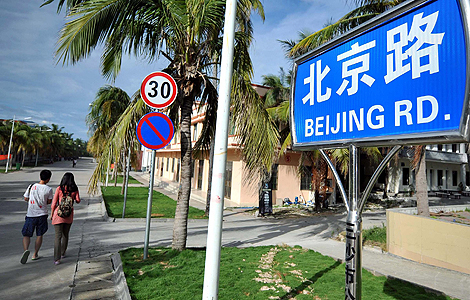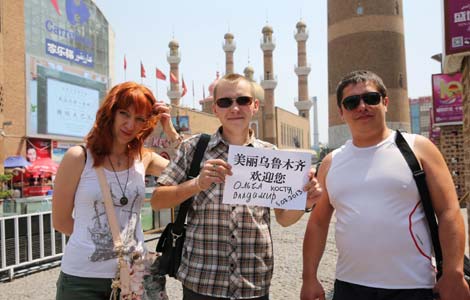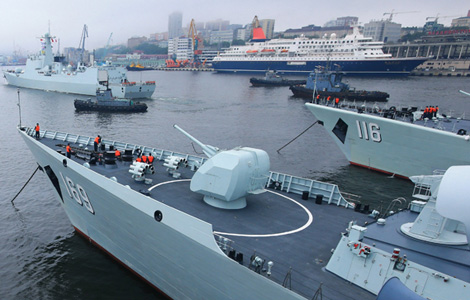Dialogue mechanisms conducive to strengthened ties, cooperation
Updated: 2013-07-09 17:06
(Xinhua)
|
||||||||
SSD to deepen mutual trust
China-US Strategic Security Dialogue (SSD) was launched in 2011. It was first held in Washington DC under the framework of the third round of S&ED, and co-chaired by then Chinese Vice Foreign Minister Zhang Zhijun and US Deputy State Secretary James Steinberg.
Leading officials from diplomatic and military departments of both sides also attended the dialogue.
The SSD was aimed at enhancing mutual understanding, building mutual trust, exploring cooperation and narrowing differences, Zhang told reporters after the talks on May 10, 2011.
"There is a need for both sides to have such kind of platform to discuss and exchange views on major strategic issues of mutual interest, to avoid misinterpretation and miscalculation on the strategic intention of the other side and to explore possible communication, consultation and mutually beneficial cooperation in some areas," said Zhang.
Co-chaired by Zhang and then US Deputy Secretary of State William Burns, the second SSD was held in Beijing in May, 2012. The two sides had an in-depth exchange of views on issues of strategic and comprehensive security and deepening mutual understanding.
Both sides agreed to continue to develop the SSD mechanism and let it play a greater role in enhancing bilateral strategic mutual trust.
High ranking officials participated in the dialogue included Ma Xiaotian, then deputy chief of the general staff of the Chinese People's Liberation Army, then Chinese Ambassador to the United States Zhang Yesui, US Under Secretary of Defense James Miller and US Pacific Command Commander Samuel Locklear.
The third SSD is scheduled to take place in Washington DC this week, and a new cyber working group will have its first meeting under the SSD framework, as cyber issues have emerged as a center of contention between the two sides.

 Thousands flock to Texas Capitol over abortion
Thousands flock to Texas Capitol over abortion
 China's youngest city glistens under palm trees
China's youngest city glistens under palm trees
 Xinjiang tourism recovering
Xinjiang tourism recovering
 Quebec disaster death toll jumps to 13
Quebec disaster death toll jumps to 13
 Mourn for students in San Francisco air crash
Mourn for students in San Francisco air crash
 Rolling stone finally settles
Rolling stone finally settles
 Double-decker bus caught fire in Shanghai
Double-decker bus caught fire in Shanghai
 China, Russia begin live-fire navy drill
China, Russia begin live-fire navy drill
Most Viewed
Editor's Picks

|

|

|

|

|

|
Today's Top News
China improves maritime law enforcement
Air crash victims' families arrive in SF
Hopes are high for US, China talks
Laden's life on the run revealed
US mulls hastening withdrawal from Afghanistan
China's inflation grows 2.7% in June
Country singer Randy Travis in critical condition
Police look for suspects in Brazil soccer slaying
US Weekly

|

|







